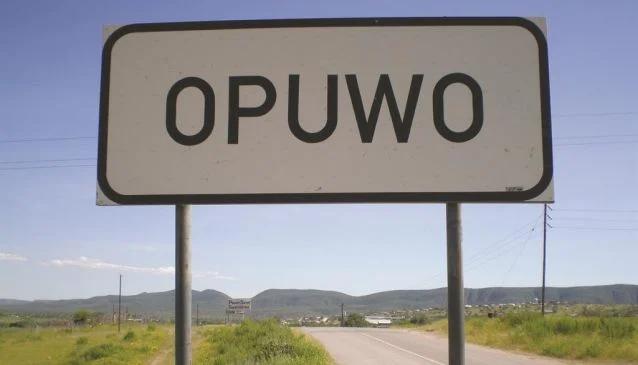SHEEP farmers are losing out on the price paid in Namibia for mutton, but Government justifies this with the argument that farmers save on transport costs to South Africa.
Mutton is largely produced in the communal areas in southern Namibia and farmers claim they lose N$100 per head of sheep sold. “For January this year the local price paid for mutton was N$2,64 lower per kilogramme than the comparative price in South Africa, and for the whole of 2006, the local price was N$1,64 below the South African prices,” Agriculture Minister Dr Nickey Iyambo admitted in the National Assembly.Iyambo was responding to questions from DTA Parliamentarian McHenry Venaani last week.”The difference in price does not reflect the true picture.Farmers save on transport cost and losses on the grading and weight on sheep due to shorter transport distances and less stress on animals.Most probably the savings would be more than the lower Namibian abattoir price,” the Minister said.Government pushed for slaughtering locally from July 2004 onwards, with the regulation that for each live sheep exported to South Africa, one had to be slaughtered in Namibia to improve the local slaughtering capacity.This ratio was increased to 2:1, meaning that two sheep had to be slaughtered locally for each one exported.Since September 1 2006, the ratio was increased to 6:1, as “negotiated with the small-stock industry”.Minister Iyambo told the House that before the implementation of these rules under the Small Stock Marketing Scheme, only 30 per cent of locally bred sheep were slaughtered in Namibia – the rest was exported on the hoof.Since July 2004, however, local slaughtering has risen to 75 per cent.”From September 2006 to January 2007 only 5,46 per cent of sheep were exported on hoof while 94,5 per cent were slaughtered at Namibian facilities,” according to the Agriculture Minister.Iyambo argued that the lower mutton prices paid in Namibia – and especially those of January 2007 – were necessitated by “a sharp decline” in meat prices in neighbouring South Africa.”Due to shorter transport distances and smaller losses on the grading of animals, farmers are most likely to be better off by slaughtering in Namibia,” he added.Mutton producers had an urgent meeting with the Meat Board on Friday, this newspaper reliably learnt yesterday, and it was decided to appoint a consultant to study the situation in the mutton industry.Evert Benade, spokesperson of the Action Committee of Sheep Farmers (ACSF), would not comment on the outcome of Friday’s meeting.”The meeting took place, some proposals were put on the table and we must now wait for a decision,” he told The Namibian yesterday.”Some farmers, including myself, lose up to N$4,50 per kilogramme for A Grade mutton, the best rate,” he said.He had previously, like most sheep farmers in southern Namibia, exported live sheep to the Groblershoop abattoir in the Northern Cape.According to sources in the meat industry, the consultant is to complete his study by the middle of May, which coincides with the six-month trial period of the 6:1 sheep export ratio.In a position paper issued last week, the ACSF said that farmers were not only losing out because of the lower prices paid by Namibian abattoirs, but had no other marketing alternatives.”Now live animals are slaughtered at local abattoirs, dressed and exported as carcasses to South Africa.Producers are thus faced with one-channel marketing through a single, monopolistic cartel,” the ACSF said in the position paper.”In this process they are paid much lower prices than they could have realised under the former free market system.”Transport companies in Namibia might have to shut down because they are losing business, the ACSF position paper said.Service stations and other providers of services and goods to truckers in small towns in southern Namibia are also feeling the pinch, it said.The negative ripple effects continue, as farmers now have to wait six to eight weeks to have their sheep slaughtered while the prospects of a severe drought grow by the day.Animals that can only be slaughtered in two months’ time are in the meantime “devouring precious pasture” that should be used to keep breeding stock alive.”Abattoirs are also in a straightjacket,” the Acton Committee of Sheep Farmers argued.”The buyers (in South Africa) know that abattoirs are under pressure to slaughter at full tilt and have to dispose of the sheep carcasses within days after slaughter and buyers lay down the prices (for mutton),” the Committee said.”For January this year the local price paid for mutton was N$2,64 lower per kilogramme than the comparative price in South Africa, and for the whole of 2006, the local price was N$1,64 below the South African prices,” Agriculture Minister Dr Nickey Iyambo admitted in the National Assembly.Iyambo was responding to questions from DTA Parliamentarian McHenry Venaani last week.”The difference in price does not reflect the true picture.Farmers save on transport cost and losses on the grading and weight on sheep due to shorter transport distances and less stress on animals.Most probably the savings would be more than the lower Namibian abattoir price,” the Minister said.Government pushed for slaughtering locally from July 2004 onwards, with the regulation that for each live sheep exported to South Africa, one had to be slaughtered in Namibia to improve the local slaughtering capacity.This ratio was increased to 2:1, meaning that two sheep had to be slaughtered locally for each one exported.Since September 1 2006, the ratio was increased to 6:1, as “negotiated with the small-stock industry”.Minister Iyambo told the House that before the implementation of these rules under the Small Stock Marketing Scheme, only 30 per cent of locally bred sheep were slaughtered in Namibia – the rest was exported on the hoof.Since July 2004, however, local slaughtering has risen to 75 per cent.”From September 2006 to January 2007 only 5,46 per cent of sheep were exported on hoof while 94,5 per cent were slaughtered at Namibian facilities,” according to the Agriculture Minister.Iyambo argued that the lower mutton prices paid in Namibia – and especially those of January 2007 – were necessitated by “a sharp decline” in meat prices in neighbouring South Africa.”Due to shorter transport distances and smaller losses on the grading of animals, farmers are most likely to be better off by slaughtering in Namibia,” he added.Mutton producers had an urgent meeting with the Meat Board on Friday, this newspaper reliably learnt yesterday, and it was decided to appoint a consultant to study the situation in the mutton industry.Evert Benade, spokesperson of the Action Committee of Sheep Farmers (ACSF), would not comment on the outcome of Friday’s meeting.”The meeting took place, some proposals were put on the table and we must now wait for a decision,” he told The Namibian yesterday.”Some farmers, including myself, lose up to N$4,50 per kilogramme for A Grade mutton, the best rate,” he said.He had previously, like most sheep farmers in southern Namibia, exported live sheep to the Groblershoop abattoir in the Northern Cape.According to sources in the meat industry, the consultant is to complete his study by the middle of May, which coincides with the six-month trial period of the 6:1 sheep export ratio.In a position paper issued last week, the ACSF said that farmers were not only losing out because of the lower prices paid by Namibian abattoirs, but had no other marketing alternatives.”Now live animals are slaughtered at local abattoirs, dressed and exported as carcasses to South Africa.Producers are thus faced with one-channel marketing through a single, monopolistic cartel,” the ACSF said in the position paper.”In this process they are paid much lower prices than they could have realised under the former free market system.”Transport companies in Namibia might have to shut down because they are losing business, the ACSF position paper said.Service stations and other providers of services and goods to truckers in small towns in southern Namibia are also feeling the pinch, it said.The negative ripple effects continue, as farmers now have to wait six to eight weeks to have their sheep slaughtered while the prospects of a severe drought grow by the day.Animals that can only be slaughtered in two months’ time are in the meantime “devouring precious pasture” that should be used to keep breeding stock alive.”Abattoirs are also in a straightjacket,” the Acton Committee of Sheep Farmers argued.”The buyers (in South Africa) know that abattoirs are under pressure to slaughter at full tilt and have to dispose of the sheep carcasses within days after slaughter and buyers lay down the prices (for mutton),” the Committee said.
Stay informed with The Namibian – your source for credible journalism. Get in-depth reporting and opinions for
only N$85 a month. Invest in journalism, invest in democracy –
Subscribe Now!










